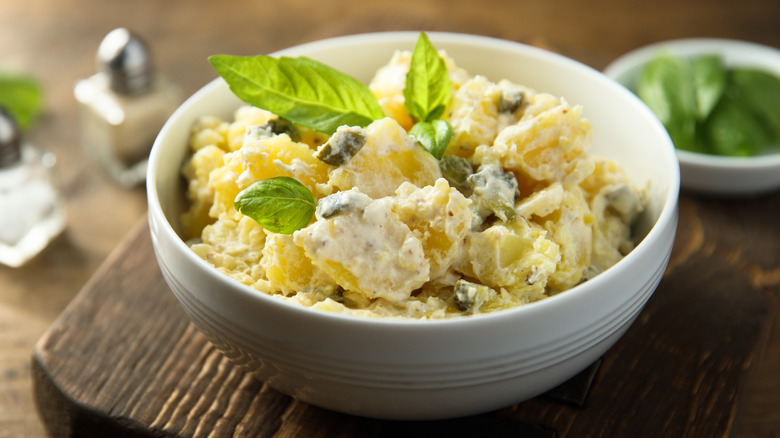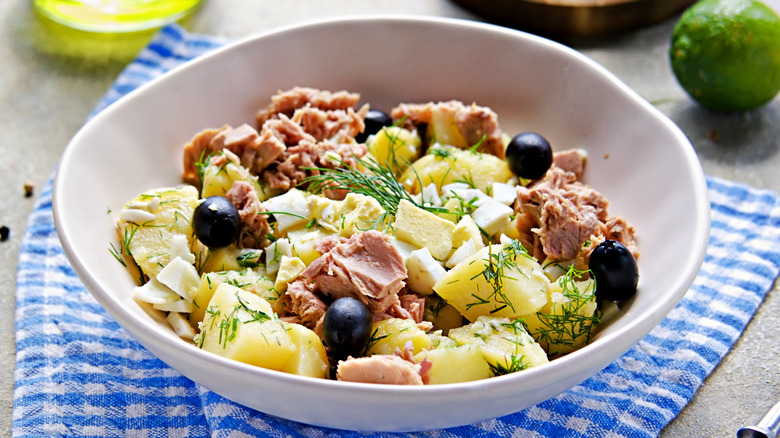Why The Type Of Dressing In Your Potato Salad Matters
What is summertime without potato salad? Can you think of any cookout that would be complete if there was no potato salad? It just wouldn't be a cookout.
This staple side dish can be done a million different ways. Jamie Oliver likes to do his with new potatoes, EVOO, lemon, herbs, plain yogurt, bacon, and breadcrumbs. Jacques Pépin uses a "mayo-Grette" (mayo, mustard, water, and olive oil) over warm potatoes. Take a look at the list Bon Appétit has compiled for more inspiration.
As with anything food-related, what matters is that you are making something you like. That said, it's still a good idea to follow some basic rules about certain dishes. With potato salad, it's the dressing that could make or break your potato salad. Certain dressings cater well to warm salads, and others don't. It's key that you know precisely why the dressing of your potato salad matters above all else.
How to avoid a soupy salad
No one wants a soupy salad. We've written about how important it is to let your potatoes cool before adding any dressing. This is particularly important when you're adding a mayonnaise-based dressing. In their recipe for potato salad, LiveStrong explains that hot potatoes continue to sweat while mixing, which can lead to watery mayonnaise. In addition, the steam generated by hot potatoes allows for moisture to be captured and can thus lead to a soupy potato salad. Allowing the potatoes to cool either entirely or lukewarm will help to avoid a watery outcome.
However, Dr. Potato over in Idaho points out that some lighter mayonnaise dressings or lite mayo will liquefy easier than your standard mayonnaise. With these factoids in mind, following the other LiveStrong tip is essential in ensuring that your salad is simply coated with dressing. A potato salad that's too heavy on the dressing can be fixed by merely adding more potatoes.

